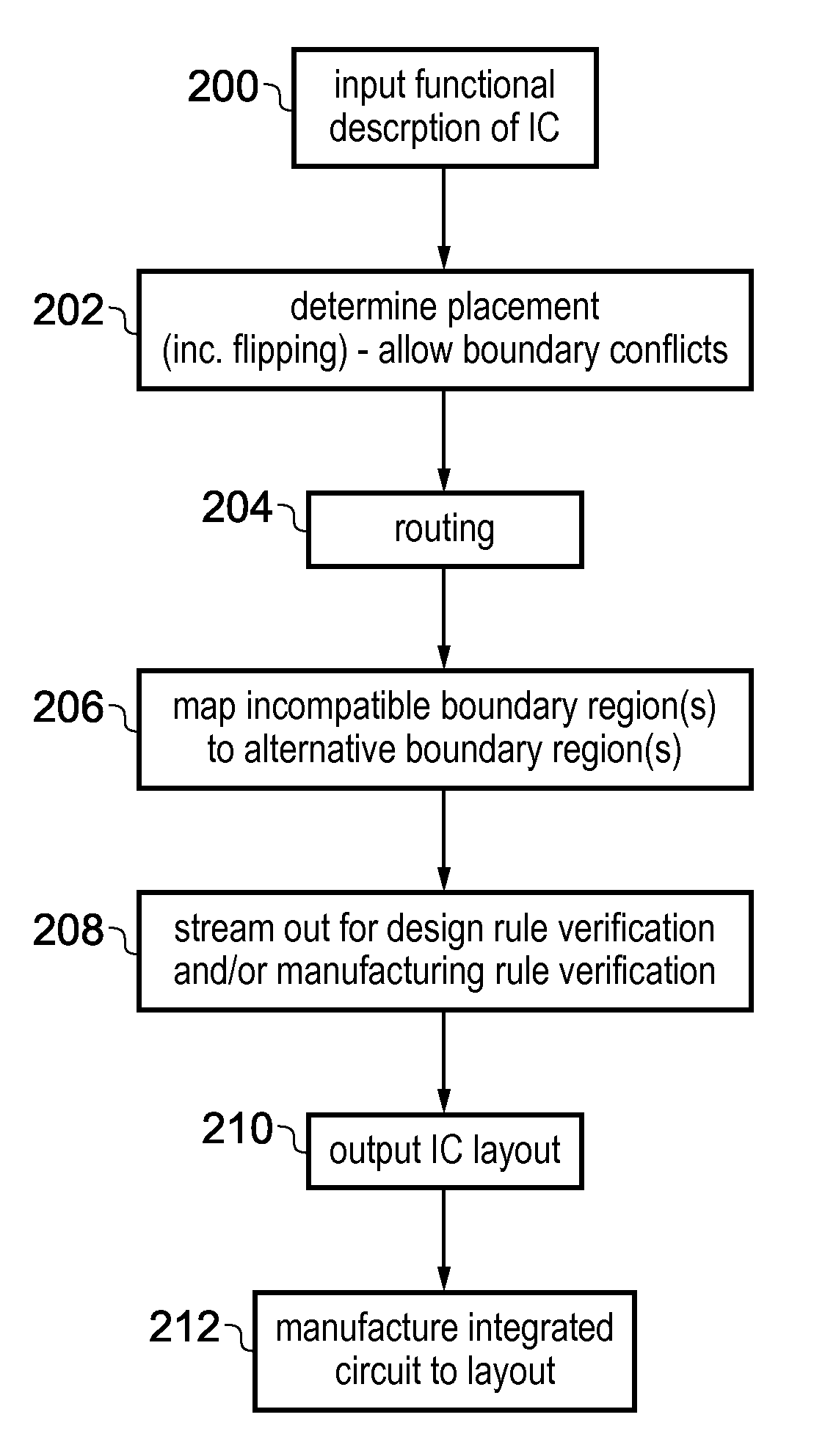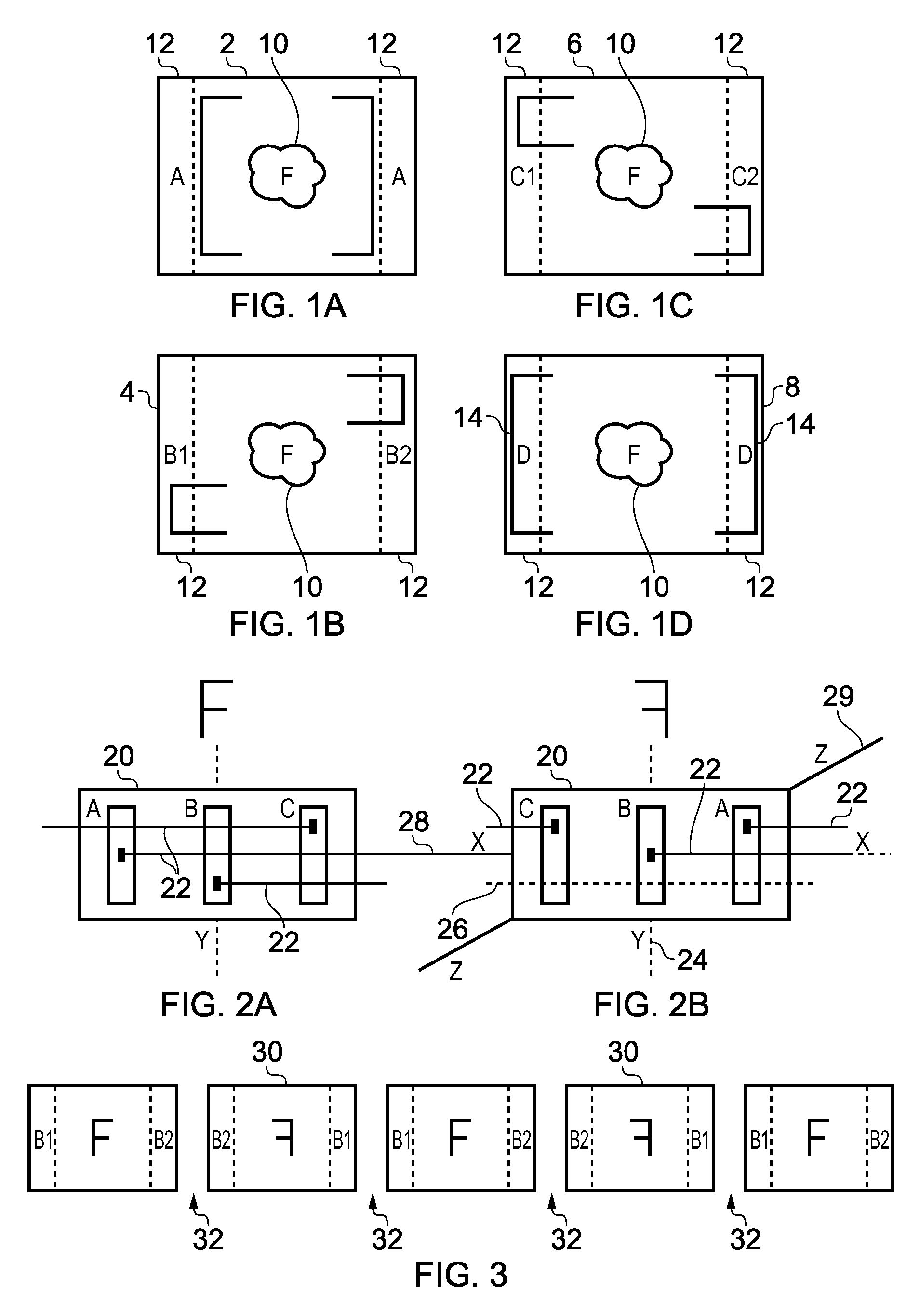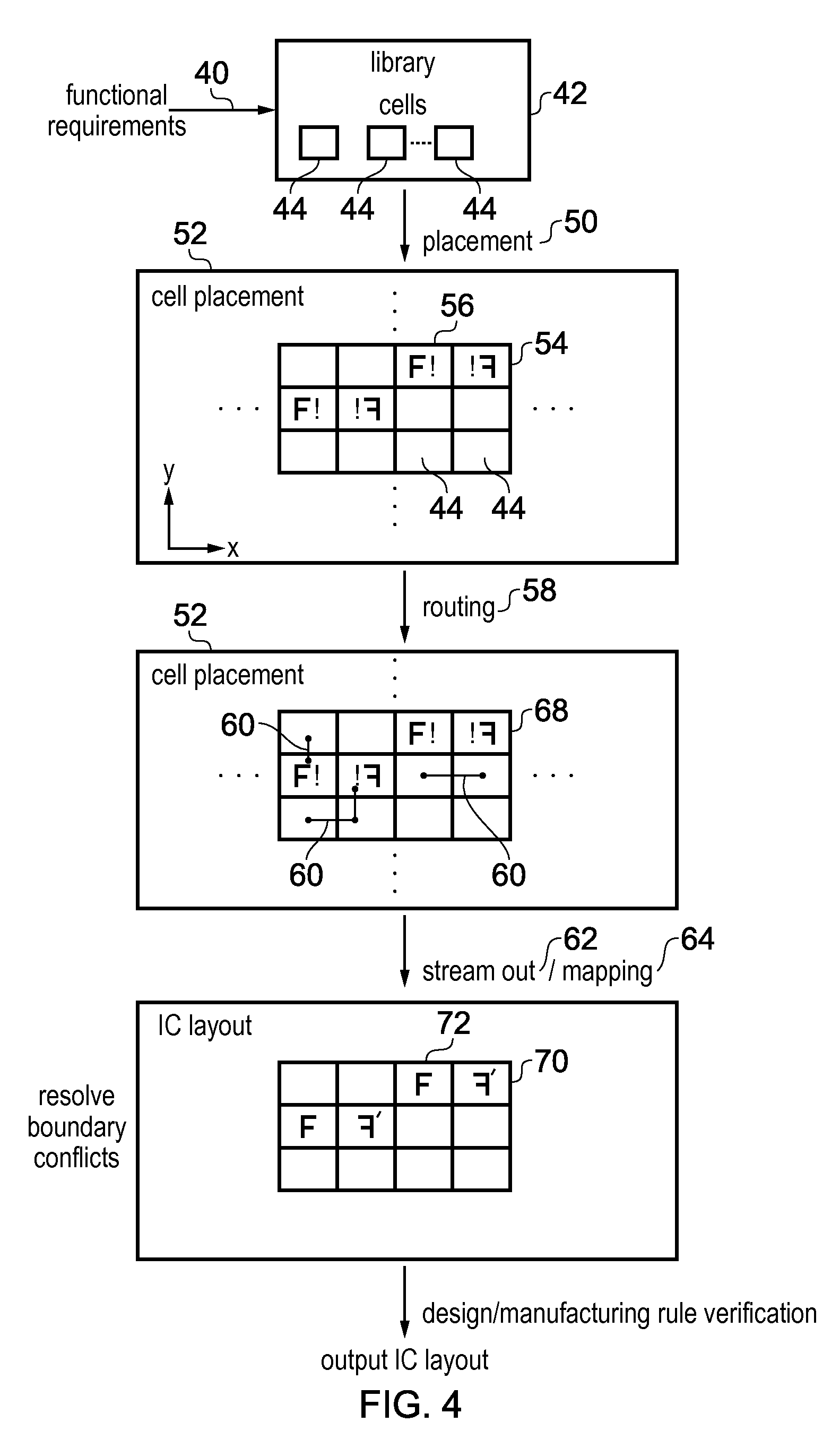Considering compatibility of adjacent boundary regions for standard cells placement and routing
a technology of compatibility and boundary region, applied in the field of integrated circuits, can solve the problems of reducing the efficiency of the circuit layout, limiting the flexibility of cell placement and connection routing, and unable to place cells next to each other in the integrated circuit layout, so as to reduce the area of the eventual integrated circuit layout, improve the routing of connections, and improve the flexibility
- Summary
- Abstract
- Description
- Claims
- Application Information
AI Technical Summary
Benefits of technology
Problems solved by technology
Method used
Image
Examples
Embodiment Construction
[0041]FIGS. 1A to 1D illustrate four examples of standard cells 2, 4, 6, 8 for potential inclusion in an integrated circuit layout. Each standard cell comprises functional circuitry 10 which may comprise any component of an integrated circuit. For example, the functional circuitry 10 may be a logic gate such as an AND gate or OR gate, an adder, or a multiplier. The letter F will be used in the drawings to denote the functional component. Each standard cell includes boundary regions 12 at the edges of the standard cell. While FIGS. 1A to 1D shows the boundary regions 12 at the left and right edges of the cell, in other examples, there may be boundary regions at the top and bottom edges instead of, or in addition to, the left and right edges.
[0042]Integrated circuit design rules or other constraints may cause boundary regions 12 of different types to be incompatible with each other so that they cannot be placed abutting each other in the integrated circuit layout. For example, there m...
PUM
 Login to View More
Login to View More Abstract
Description
Claims
Application Information
 Login to View More
Login to View More - R&D
- Intellectual Property
- Life Sciences
- Materials
- Tech Scout
- Unparalleled Data Quality
- Higher Quality Content
- 60% Fewer Hallucinations
Browse by: Latest US Patents, China's latest patents, Technical Efficacy Thesaurus, Application Domain, Technology Topic, Popular Technical Reports.
© 2025 PatSnap. All rights reserved.Legal|Privacy policy|Modern Slavery Act Transparency Statement|Sitemap|About US| Contact US: help@patsnap.com



